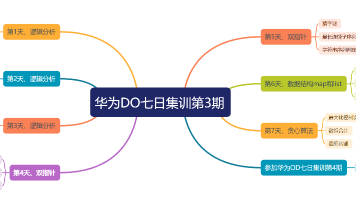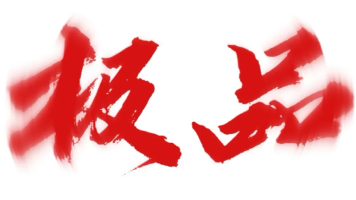Java Stream 流详解:从基础语法到实战应用,彻底掌握函数式编程利器
Java Stream API 是 Java 8 引入的函数式编程工具,用于简化集合操作。它提供链式调用、并行处理等特性,支持过滤、映射、分组等常见操作。本文介绍了 Stream 的生命周期、创建方式、中间和终端操作,并展示了数据过滤、统计、分组等实战场景。同时指出了常见误区,如不可重复使用 Stream 和线程安全问题,最后提供了常用技巧速查表。通过 Stream API 可以写出更简洁高效的
·
作为一名 Java 开发工程师,你一定在项目中处理过大量的集合数据,比如:过滤、转换、分组、统计等操作。在 Java 8 之前,这些操作往往需要编写大量冗余的 for 循环和 if 判断。
而 Java Stream API 的引入,彻底改变了集合操作的方式 —— 它提供了一种声明式、链式、可并行的编程模型,让你的代码更简洁、更高效、更易读。
本文将带你全面掌握:
- Java Stream 的基本概念与生命周期
- 常用中间操作与终端操作(filter、map、sorted、collect 等)
- Stream 的并行流与性能优化
- Stream 与集合、Optional、函数式接口的结合使用
- 实战场景讲解(如数据过滤、分组统计、合并、去重等)
- 最佳实践与常见误区
并通过丰富的代码示例和真实项目场景讲解,帮助你写出更优雅、结构更清晰的 Java 函数式代码。
🧱 一、什么是 Java Stream?
Stream 是 Java 8 引入的一个函数式编程接口,它不是集合本身,而是对集合(如 List、Set)或数组的函数式封装,用于进行数据的筛选、映射、聚合等操作。
✅ Stream 的核心特性:
| 特性 | 描述 |
|---|---|
| 不存储数据 | Stream 只是数据源的视图,不保存数据本身 |
| 不可重复使用 | 一个 Stream 只能使用一次,之后会抛出异常 |
| 支持链式调用 | 多个操作可以以声明式方式串联 |
| 支持串行与并行 | 可以使用 parallelStream() 提高性能 |
| 基于函数式接口 | 支持 Lambda 表达式,如 Predicate、Function、Consumer 等 |
🔍 二、Stream 的生命周期
一个完整的 Stream 操作流程包括三个阶段:
- 获取源(Source)
- 中间操作(Intermediate Operations)
- 终端操作(Terminal Operation)
// 示例:Stream 的完整流程
List<String> filtered = list.stream()
.filter(s -> s.startsWith("A")) // 中间操作
.map(String::toUpperCase) // 中间操作
.limit(5) // 中间操作
.toList(); // 终端操作🧠 三、Stream 的创建方式
| 创建方式 | 示例 |
|---|---|
| 从集合创建 | list.stream() |
| 从数组创建 | Arrays.stream(array) |
| 从值创建 | Stream.of("A", "B", "C") |
| 从文件行创建 | Files.lines(Paths.get("file.txt")) |
| 无限流创建 | Stream.iterate(0, n -> n + 1)、Stream.generate(Math::random) |
🧩 四、常用中间操作(Intermediate Operations)
| 操作 | 描述 | 示例 |
|---|---|---|
filter(Predicate) |
过滤符合条件的元素 | stream.filter(s -> s.length() > 3) |
map(Function) |
转换每个元素 | stream.map(String::toUpperCase) |
flatMap(Function) |
扁平化处理,适用于嵌套结构 | stream.flatMap(List::stream) |
distinct() |
去重(基于 equals() 和 hashCode()) |
stream.distinct() |
sorted() |
排序(自然排序或自定义排序) | stream.sorted(Comparator.reverseOrder()) |
limit(n) |
截取前 n 个元素 | stream.limit(10) |
skip(n) |
跳过前 n 个元素 | stream.skip(5) |
🧨 五、常用终端操作(Terminal Operations)
| 操作 | 描述 | 示例 |
|---|---|---|
forEach(Consumer) |
遍历每个元素 | stream.forEach(System.out::println) |
collect(Collector) |
收集结果(转为 List、Set、Map 等) | stream.collect(Collectors.toList()) |
count() |
返回元素个数 | stream.count() |
anyMatch(Predicate) |
是否有任意一个匹配 | stream.anyMatch(s -> s.contains("Java")) |
allMatch(Predicate) |
是否全部匹配 | stream.allMatch(s -> s.length() > 3) |
noneMatch(Predicate) |
是否没有匹配 | stream.noneMatch(s -> s.isEmpty()) |
findFirst() |
获取第一个元素 | stream.findFirst() |
reduce(BinaryOperator) |
聚合操作(如求和) | stream.reduce((a, b) -> a + b) |
🧪 六、Stream 的实战应用场景
场景1:数据过滤与转换(最常见用途)
List<String> filtered = list.stream()
.filter(s -> s.startsWith("A"))
.map(String::toUpperCase)
.toList();场景2:统计与聚合(如求和、平均值)
int sum = numbers.stream()
.mapToInt(Integer::intValue)
.sum();
double avg = numbers.stream()
.mapToDouble(Integer::doubleValue)
.average()
.orElse(0);场景3:去重与排序
List<String> uniqueSorted = list.stream()
.distinct()
.sorted()
.toList();场景4:分组统计(Group By)
Map<String, List<User>> grouped = users.stream()
.collect(Collectors.groupingBy(User::getRole));场景5:多条件分组(Group By 多字段)
Map<String, Map<Integer, List<User>>> grouped = users.stream()
.collect(Collectors.groupingBy(User::getCity,
Collectors.groupingBy(User::getAge)));场景6:分区(Partition By 条件)
Map<Boolean, List<User>> partitioned = users.stream()
.collect(Collectors.partitioningBy(u -> u.getAge() > 18));场景7:合并多个集合
List<String> merged = Stream.of(list1, list2, list3)
.flatMap(List::stream)
.distinct()
.toList();场景8:并行流提升性能(大数据量推荐)
int sum = numbers.parallelStream()
.mapToInt(Integer::intValue)
.sum();🚫 七、常见误区与注意事项
| 误区 | 正确做法 |
|---|---|
| 在 Stream 中修改原始集合 | Stream 是只读的,不能直接修改源数据 |
| 多次使用同一个 Stream | Stream 只能使用一次,重复使用会抛出异常 |
| 忘记关闭流式资源(如 IO) | 使用完文件流等资源应关闭 |
忽略空值处理(如 findFirst()) |
使用 Optional 判断是否存在 |
| 忽略并行流的线程安全问题 | 并行流不适合有状态操作 |
| 忽略中间操作的惰性求值 | 中间操作不会立即执行,只有终端操作才会触发 |
📊 八、总结:Java Stream 核心知识点一览表
| 内容 | 说明 |
|---|---|
| 接口定义 | java.util.stream.Stream |
| 创建方式 | 从集合、数组、值、生成器等 |
| 中间操作 | filter、map、flatMap、distinct、sorted、limit、skip |
| 终端操作 | forEach、collect、count、anyMatch、reduce |
| 常用收集器 | toList、toSet、groupingBy、partitioningBy |
| 并行流 | parallelStream() |
| 应用场景 | 数据过滤、转换、分组、统计、聚合 |
| 注意事项 | 不可重复使用、不能修改源数据、避免中间操作副作用 |
📎 九、附录:Stream 常用技巧速查表
| 技巧 | 示例 |
|---|---|
| 转为 List | stream.toList() |
| 转为 Set | stream.collect(Collectors.toSet()) |
| 转为 Map | stream.collect(Collectors.toMap(User::getId, Function.identity())) |
| 获取最大最小值 | stream.max(Comparator.naturalOrder()) |
| 判断是否包含 | stream.anyMatch(s -> s.equals("Java")) |
| 使用 Stream 合并字符串 | stream.collect(Collectors.joining(",")) |
| 使用 Stream 生成范围数字 | IntStream.range(1, 10).boxed().toList() |
| 使用 Stream 合并多个集合 | Stream.of(list1, list2).flatMap(List::stream).toList() |
| 使用 Stream 处理 Optional | stream.flatMap(s -> Optional.ofNullable(s)) |
| 使用 Stream 处理异常 | stream.filter(s -> { try { ... } catch (...) { return false; } }) |
如果你正在准备一篇面向初学者的技术博客,或者希望系统回顾 Java 8 的函数式编程特性,这篇文章将为你提供完整的知识体系和实用的编程技巧。
欢迎点赞、收藏、转发,也欢迎留言交流你在实际项目中遇到的 Stream 相关问题。我们下期再见 👋
📌 关注我,获取更多Java核心技术深度解析!
更多推荐
 已为社区贡献1条内容
已为社区贡献1条内容









所有评论(0)